
Acrosiphonia coalita
Green Rope
19 May 2022
Mill Bay, Port San Juan, B.C., Canada.
Tide: 0.3 feet at 10:27am PDT (measured at Port Renfrew Tidal Station)
Conditions: Partly cloudy, wind west 5 to 15 km/hour, sea rippled, low westerly swell, humidity 75%, 9˚C.
Moon: Waning Gibbous (81.8%, 19 days); Previous Phase, Full Moon, 15 May 2022 at 9:14pm PDT: Next Phase, Third Quarter, 22 May 2022 at 11:43am PDT.
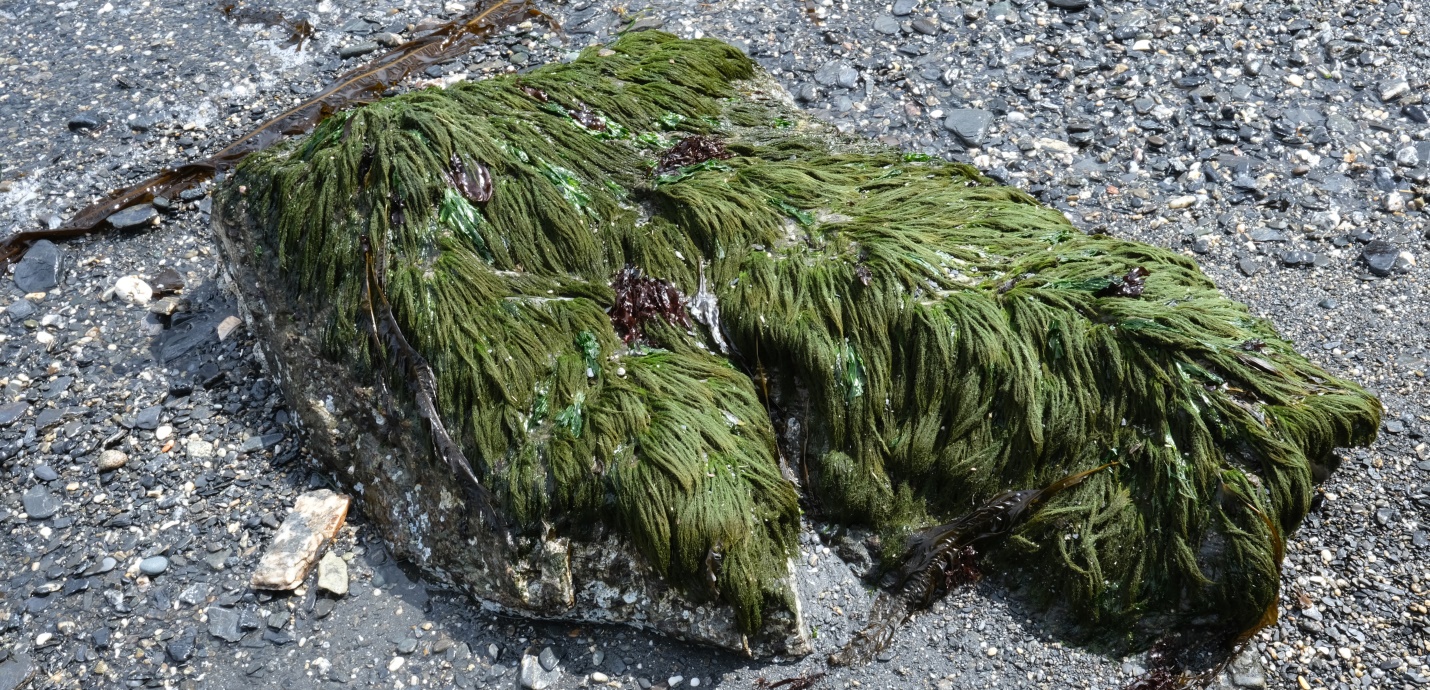
Figure 1: Acrosiphonia coalita growing in multiple strands of ‘Green Rope’ on large boulders of a coarse pebble beach; Mill Bay, Port San Juan, B.C., Canada. May 19, 2022. Photo ID: 27199 ©Seaweedwhisperings.com
Person 1:
Showy – both close-up and at a distance.
Neat, uniform dreadlocks that can be displayed in many ways, such as:
radiating in all directions from the top of a rock.
dripping down a boulder face in parallel lines (sometimes overlapping each other)
resting in waves on a flat surface.
From a distance it looks as though it might be braided, but it is not.
Short filaments radiating out from the main axes give a coarse appearance to the thalli.
The stunning emerald green attracts me to this seaweed.
It’s all about physicality – not the mind, not the emotions, it’s more about behavior and what you look like; dress, sexuality, demeanor… It’s friendly and flirtatious.
Confident, proud, nothing to hide (on the surface).
Not flamboyant… doesn’t have to be… it’s naturally attractive without effort.
I’m sure using lots of “ … ” [ellipses, punctuation mark consisting of three dots; when normally I rarely do.]
I wonder if it can get over confident and get stuck in its good looks or popularity or reputation.
Might miss out on deeper, more fulfilling aspects of life.
Recognition of what it may have missed could lead to bitterness, nastiness and self destructive tendencies.
Could fight to maintain old ways.
Green Rope…, rope…, tided down to tried and true performances.
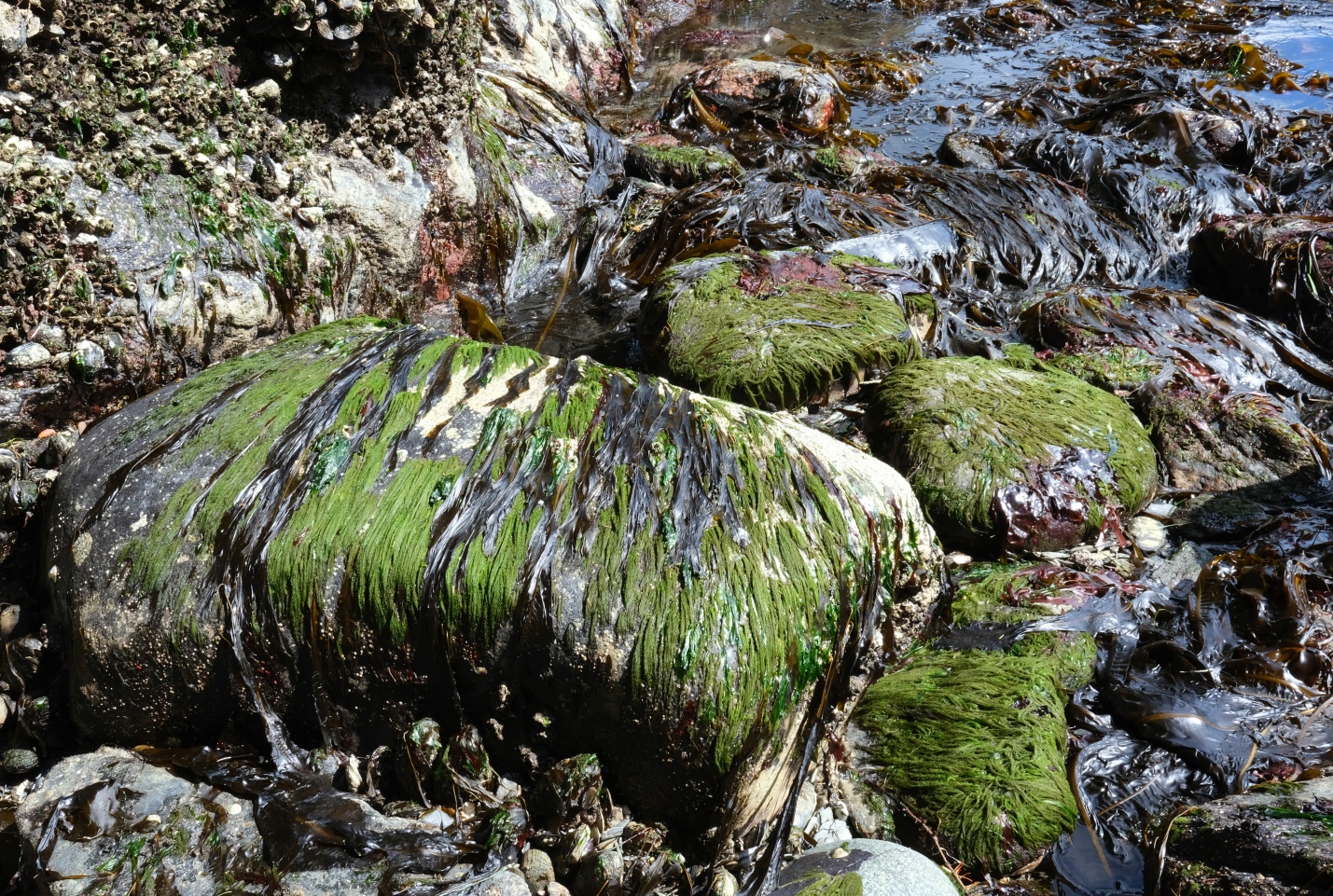
Figure 2: A view of the type of intertidal habitat that Green Rope prefers. On the largest boulder Acrosiphonia coalita is growing alongside the brown alga, Alaria marginata. On smaller boulders, it is the main macro algal presence. Mill Bay, Port San Juan, B.C., Canada. May 19, 2022. Photo ID: 27201 ©Seaweedwhisperings.com
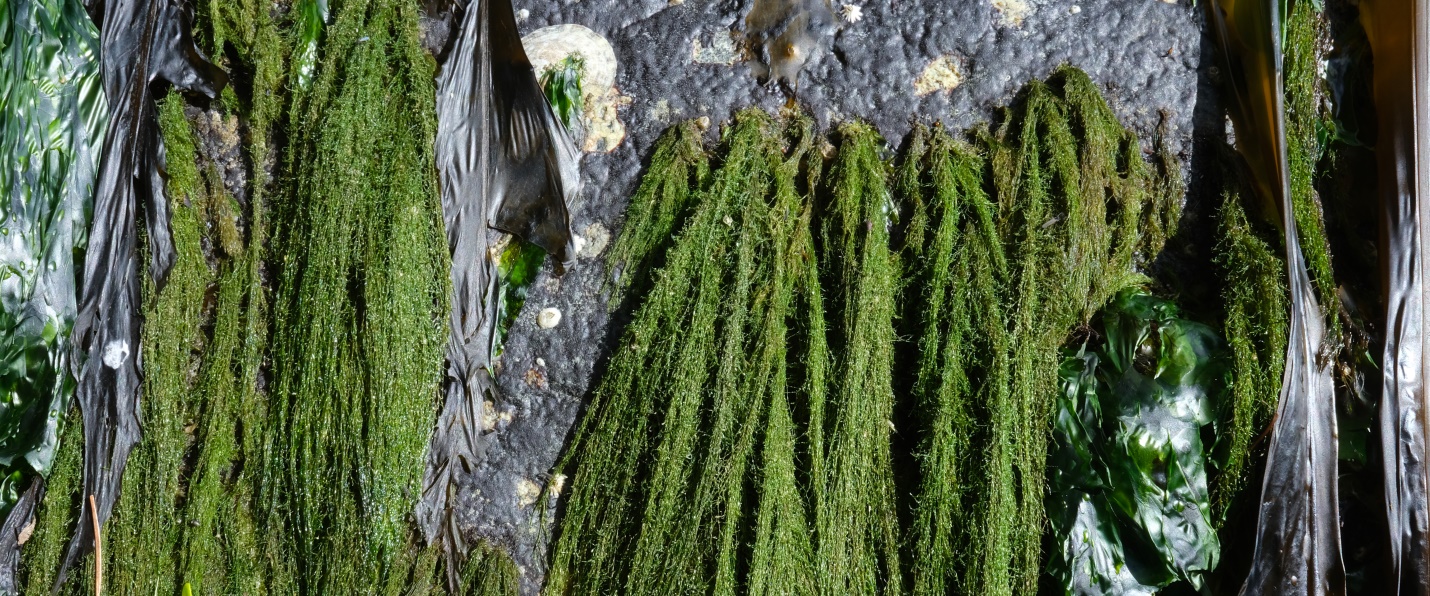
Figure 3: A closer view of Green Rope – the holdfast area and first15cm or so of the thalli. Mill Bay, Port San Juan, B.C., Canada. May 19, 2022. Photo ID: 27202 ©Seaweedwhisperings.com
Person 2:
Green Rope, you draw my attention!
Fuzzy looking, mostly parallel lengths of bright green, laid out on the rocks here in so many places at this very low spring tide.
In some areas you lie in straight lines, in others your arrangement is much more curvaceous. But wherever you are there is usually a group of you – many green ropes all anchored near to each other.
On some rounded boulders and larger cobbles, your presence gives the look of a very nicely cornrowed hair style. In another setting, Acrosiphonia brought humor to my mind; a few ‘tassels’ of Green Rope were growing on each of several limpets [univalve animals in the Invertebrate group] and it seemed to give the limpets a bit of ‘flair’. From the perspective of the seaweed the attitude is – “life lived on a univalve that wanders around the intertidal zone? Why not? Let me try it!”
Often you grow almost exclusively with your ‘own kind’. In some areas that you are growing a few different species of seaweeds have their holdfasts on the same rock as you do, but your thalli hide these parts of them – they can only grow in proximity to you if they are long and can reach out past the curtain of green ropes that you form.
Looking up close, one can see how the whole length of your thallus has small side branchlets that curl out. Why are those present? Do they enmesh with each other, helping hold the numerous longer strands together in a loosely woven rope? It looks like they have something to do with that and they also give a bit of a ‘hairy’ texture to your beautiful green look – somewhat like one might see with a garment knit from angora yarn.
These loose ends that curl out, they also catch the light, adding another lighter green fringe and the edges of the green ropes. The bits of light sparkle in the sunlight and this pleases Acrosiphonia to be able to sparkle!
The manner of growing these short curling out branchlets gives this seaweed a look that reminds me of twine or bailing twine – a coarse, loosely bound type of rope that is not braided or made with a consistent pattern.
While this kind of twine is quite coarse, to touch Acrosiphonia is not unpleasant. It’s quite soft and pliable, but I do wonder if on a hotter day, when exposed at a low tide, if there would be some brittle qualities to the sparkle-curls, that this part of Green Rope could shatter and the pieces would fall – fall, fall, fall a long way down out of the light to where the fragile dried out pieces could not be put back together again.
I’ve seen you, Acrosiphonia coalita, splayed out in the sea, immersed in the water, and then your ‘ropes’ loosen up, float more freely apart. They become fuzzy looking looser lengths of bright green that are seem truly delighted to be floating – floating, floating, floating. It’s more than delight this floating, it is blissful.
This is quite a different look/state of being than the out of water ‘ropes’.
It seems to me that you clearly prefer the freedom of the water, the ‘lift’ it gives you, and that when the tide strands you above water, you choose to link-up and enmesh with yourself as a way to best wait out the cycles of the tides.
You do NOT mix up and enmesh with other species of seaweeds. Why is that?
Are you not liked?
Not appreciated?
Not really understood?
Your bright, bright green may be too much for some. Too bright? Too unicolor?
And possibly you yourself do not quite know how to share very much with others, at least in a way that they would stick around to enjoy more of.
Out of water you seem a bit too fixed, and a bit too set on your one way of ‘waiting out the tides’ that you are not very approachable.
There is another aspect of your ‘being/behavior’ that caught my attention; I’ll call it ‘contour lines’ as in cartography. It is obvious that the shape and contours and even to some degree the texture of the rock/boulders/substrate that Green Rope grows on really makes a difference as to how this seaweed looks when it is stranded and out of water. While Acrosiphonia coalita will ‘rope up’ together always when out of water it has no mid-rib, no ‘backbone’ or ‘spine’, so to speak, and as such it can only lie prostrate on whatever surface its holdfast has affixed to.
In a sense all the varied and sometimes quite lovely patterns these multiple green ropes make reveal nothing about Green Rope and much about Green Rope’s surroundings/background/home base. The background or home base or circumstances in which Acrosiphonia lives is presented/amplified/reflected through Acrosiphonia’s energy itself. It seems that this seaweed has a way of “dressing it up” or presenting the background with “flair” such that the background is not as hidden or secondary to the main picture as one connotation of that word implies. I think this ‘presenting the background’ aspect of Green Rope’s energy happens totally effortlessly on their part – it is a natural and possibly unstoppable trait that this alga possesses. This innocent trait/natural ability of Acrosiphonia can be ‘revealing’ in a way that is unexpected, or more profound, or more wise, or simply more shameless and undisguised than the background itself would choose to portray.
Also this revealing portrayal (yes, make a portrait of) is not an intellectual action on the part of Acrosiphonia coalita – it is most definitely a physical one.
It strikes me that Acrosiphonia can have a love/hate relationship with ‘the physical’ in life. Physical limitations pain them and physical joys thrill them. They can utterly bask in the bliss of the floating feeling, or miserably sink into despair with the stranded and stuck all-enmeshed feeling. It seems that bliss is approachable and experienced by Acrosiphonia and so is the opposite. Heaven and hell – all present in a simple rope of green alga!
Considering that Acrosiphonia can be rather ‘gifted’ at revealing its background/home base, I did wonder if that is one of its main gifts or if that is the only thing Green Rope feels confident to so dramatically ‘show’ the world. It left me to wonder about Acrosiphonia coalita itself – not their background, but their interior. It seems to me that Green Rope does not ‘show’ this really much at all. I wondered how I could come to know it. Would I need to somehow join in when Acrosiphonia is immersed in the ocean waters and floats out more loosely and freely? Where very few earthly restrictions are felt? Or would I need to wrap in closely enmeshed within the cord of lovely green fibers? Both of these options seem difficult, almost impossible, really, for an ‘other’ to do. Perhaps that is exactly how you prefer it, Green Rope.
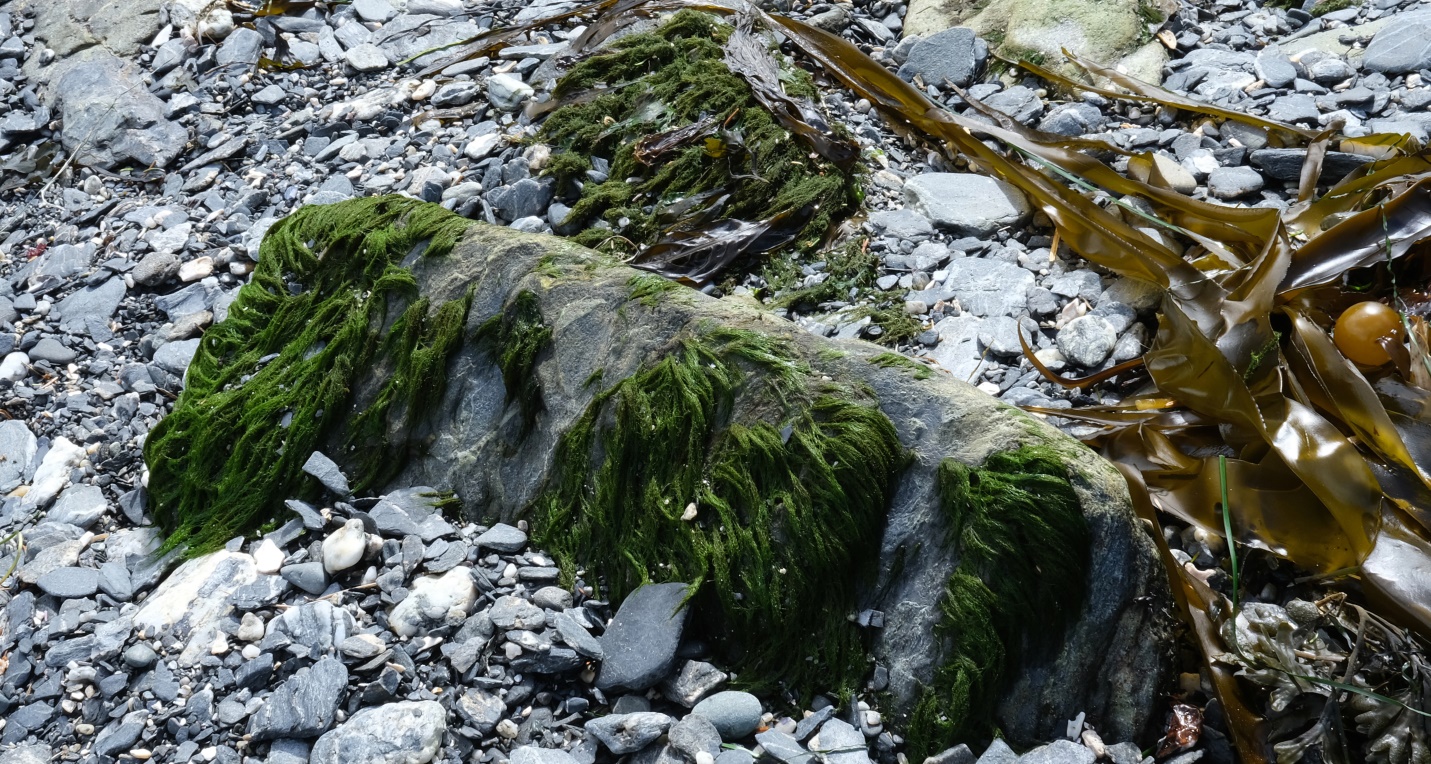
Figure 4: Green Rope, exposed at low tide on the rocky substrate; Mill Bay, Port San Juan, B.C., Canada. May 19, 2022. Photo ID: 27200 ©Seaweedwhisperings.com
Person 3:
Interacting with this seaweed I had a strong sense of an energy of wanting to stand out but also wanting to conform, except I wasn’t sure that the seaweed knew what it was trying to be different from or conform with.
On one level it seems to know that it is distinctive and special and on another it feels a need to be seen as part of a group.
There is huge tension in this dichotomy. One moment you are happy in your difference the next it becomes something you want to hide so that you are not singled out as “unacceptable”. You can be different as long as you feel you can justify how that different-ness works in the setting in which you find yourself.
Within this is a sense that you are not even certain that you know what you want, you seem to look to “something else” to help define what you should do and then you adhere to that idea without being sure this is what is really right for you.
There is an inner resolve and strength but not so much a physical strength to this energy. Something of a hidden stubbornness, perhaps.
Discussion:
Why the use of so many ellipses in Person 1’s notes? This was highly unusual punctuation usage for him. We looked at the usage of this punctuation mode.
Commonly ellipses are used in writing to mark where words are omitted which may be superfluous or may be able to be understood from contextual clues. This is only partly why Prover 1 employed this punctuation; it also was for the second and informal or colloquial use where the ellipsis represents the trailing off of a thought.
The questions naturally arise then related to this seaweed:
What is Green Rope omitting?
Is Green Rope relying on its context to tell its story?
Where does Green Rope go when it trails off into a certain behaviors, physical states, or other expressions? If we are left to our imagination to fill that in, are we likely to be anywhere close in our understanding…?
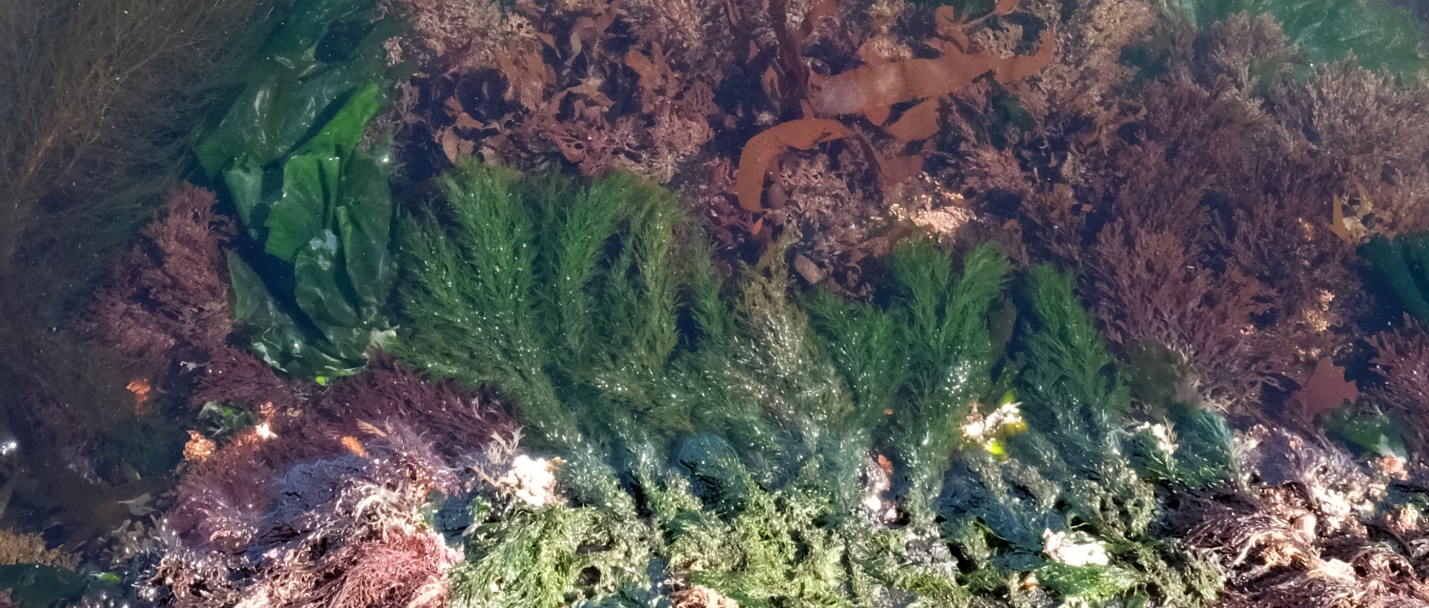
Figure 5: A ‘bird’s-eye’ view of Acrosiphonia coalita loosely floating out as the tide gently returns at Gonzales Bay. Juan de Fuca Strait, B.C., Canada. April 22, 2022. Photo ID: 27203 ©Seaweedwhisperings.com
Biology & Natural History Information:
Description:
The bright green to dark green thallus is composed of highly tangled branched filaments tat from 10 to 20 cm long rope-like strands. Branching filaments of single cells compose the structure of this green alga; some of the branches curve quite distinctly near their tips, and these entangle and hook into other filaments creating the frayed green rope-like complexes of this distinctive-looking seaweed. In ideal habitats, Green Rope will grow to lengths of 40 cm.
Habitat:
Common, and where found often abundant, this alga lives on rocks and in tidepools in rocky shore regions at mid to low intertidal areas. Best found in spring and early summer in protected to semi-exposed habitats.
Pacific Coast Distribution:
Northern Gulf of Alaska to central California.
Remarks:
The rope-like plant is the gametophyte phase of Acrosiphonia coalita. Cells in the filaments of the thallus form swimming gametes that once released eventually fuse and grow into tiny (less than 1mm) sporophytes that live inside the thalli of other red algae species. When they were first seen inside the blades of red algae, these sporophytes were thought to be a different species of alga in the Codiolum genus.
Classification:
Phylum: Chlorophyta
Class: Ulvophyceae
Order: Acrosiphoniales
Family: Acrosiphoniaceae
Genus: Acrosiphonia
Species: Acrosiphonia coalita (Ruprecht) Scagel & al. 1986
Former name(s): Acrosiphonia mertensii; Spongomorpha coalita.
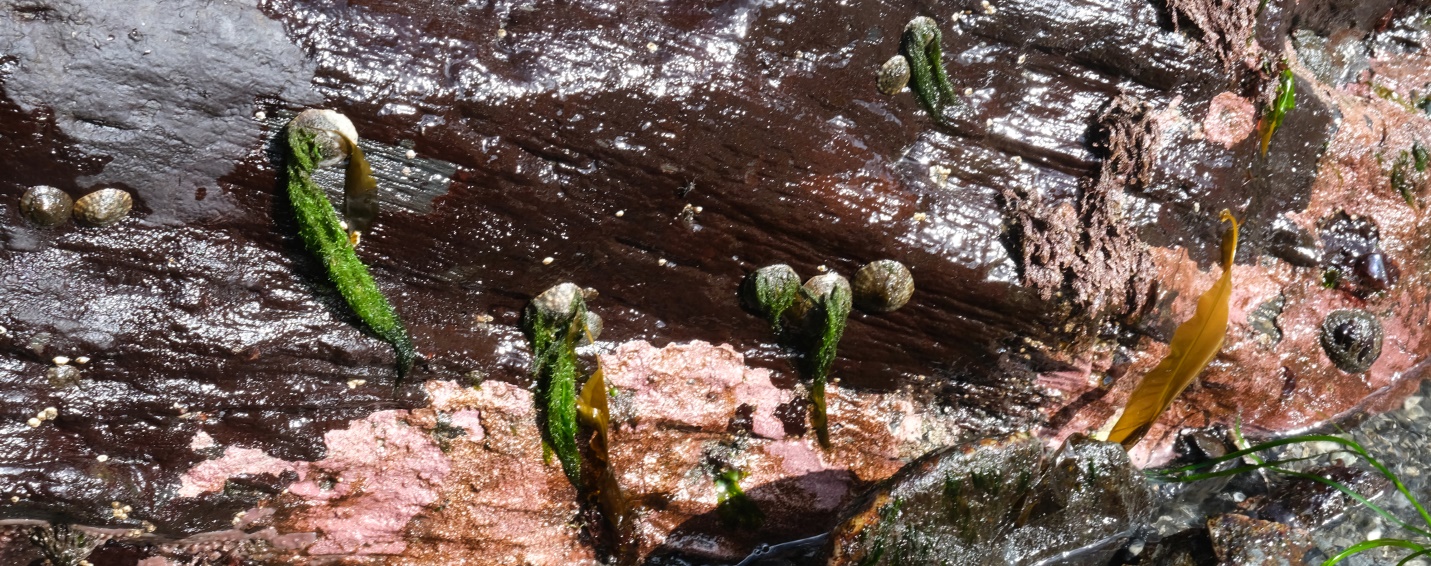
Figure 6: A closer view of Green Rope as it adorns the surface and trails down from several limpets – it even seems that the brown kelp, Alaria marginata is trying to do the same thing on a few of the univalves. At least two species of encrusting coralline algae and Red Sea Moss, Rhodochorton purpurea, add to the striking color and textural dimensions of this brimming with life intertidal location. Mill Bay, Port San Juan, B.C., Canada. May 19, 2022. Photo ID: 27204 ©Seaweedwhisperings.com
![]()